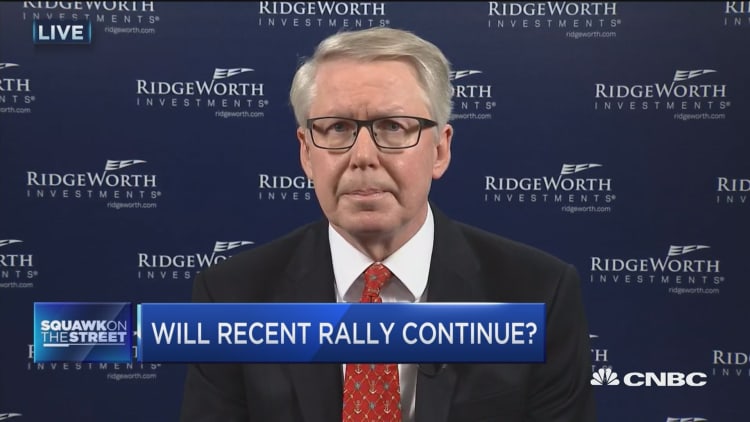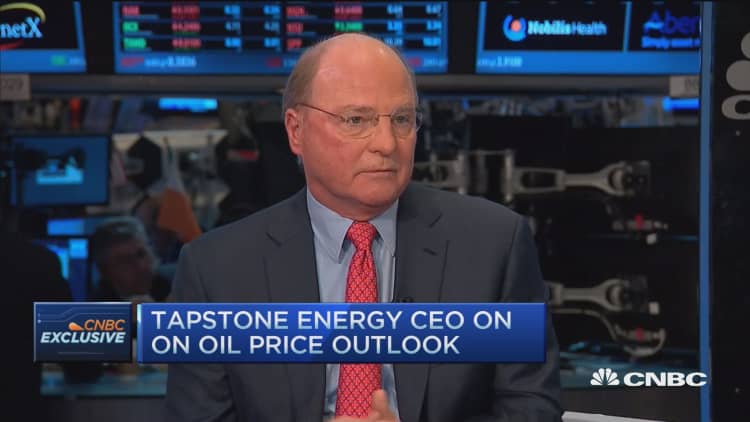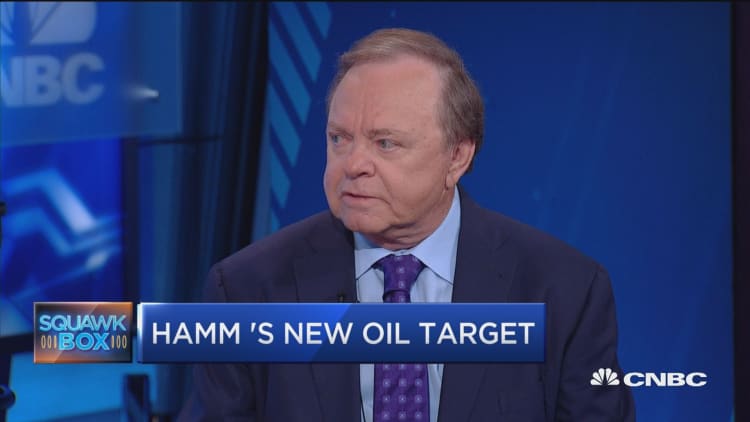
Oil prices likely need to recover to roughly $70 a barrel — and stay there — before U.S. shale drillers start investing in new production, Tom Petrie said Thursday.
The chairman of investment banking firm Petrie Partners made the call on CNBC's "Squawk on the Street" after being asked to assess the view of Chesapeake Energy co-founder Tom Ward that capital markets would not open to most U.S. drillers until crude prices rebound to $75.
Drillers need access to debt and equity markets in order to invest in new production, Ward told "Squawk on the Street" last month. Oil and gas companies have slashed capital spending because crude prices have been too low to support new investment.
Oil prices rebounded 98 percent from February's 12-year low of $26.05 to a 10 ½-month high of $51.67 reached on Thursday. The rally has stoked fears that U.S. drillers, desperate for relief, will turn on the taps to get more oil — and cash — flowing, resulting in another supply-driven crash in crude prices.
U.S. output ticked up for the first time in three months last week, according to weekly production figures released Wednesday by the Energy Information Administration.

But Petrie said the cost of bringing on substantial new production requires that drillers earn more than $50 a barrel. Ward's target is probably closer to the mark, he added.
"I'd probably say the high $60s to the low to mid-$70s is the range for a significant change," Petrie said.
More importantly, the institutions that allocate capital need to believe the price rebound is sustainable, he said. And Petrie expects setbacks along the road to recovery.
"This is going to be a process of two, three steps forward, one backward because the incentive for OPEC, and Saudi [Arabia] in particular, is to remind us that there's downside to be observed," he said.
OPEC members did not reach an agreement to cut or cap output at a meeting in Vienna last week. That means countries in the cartel are able to continue producing at high volumes, which puts pressure on U.S. frackers, who rely on an expensive drilling method called hydraulic fracturing to free oil and gas from shale rock.
To be sure, drillers have built up a large inventory of wells that have been drilled but are not yet fracked, a strategy that allows them to start new production relatively quickly.
But Petrie said drillers are already working through the best assets that produce a return at today's low prices.
Still, he said a pattern of tail winds had emerged in oil markets, setting up a good second half of 2016 for crude prices. Oil demand in China and India is holding up better than expected, he said, and some output has fallen due to supply disruptions.

Earlier Thursday, Continental Resources Chairman and CEO Harold Hamm told CNBC's "Squawk Box" supply had fallen 90 to 120 days ahead of expectations due to output disruptions in Canada, Nigeria and elsewhere, and as production continues to drop in the U.S. oil patch. Petrie said he agreed with that assessment.
Hamm said he now sees oil prices rebounding to $69 to $72 by year's end. That is well above most estimates.



